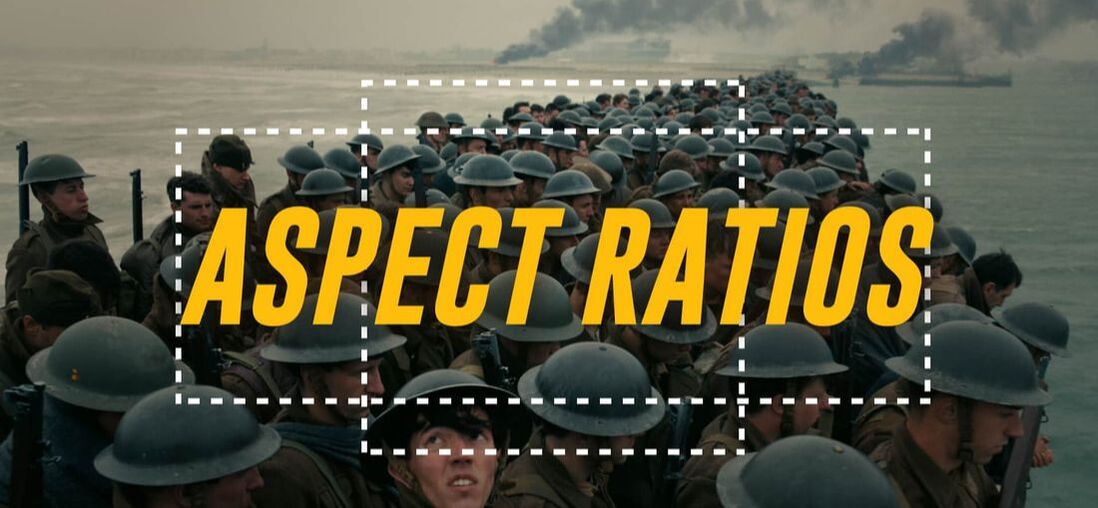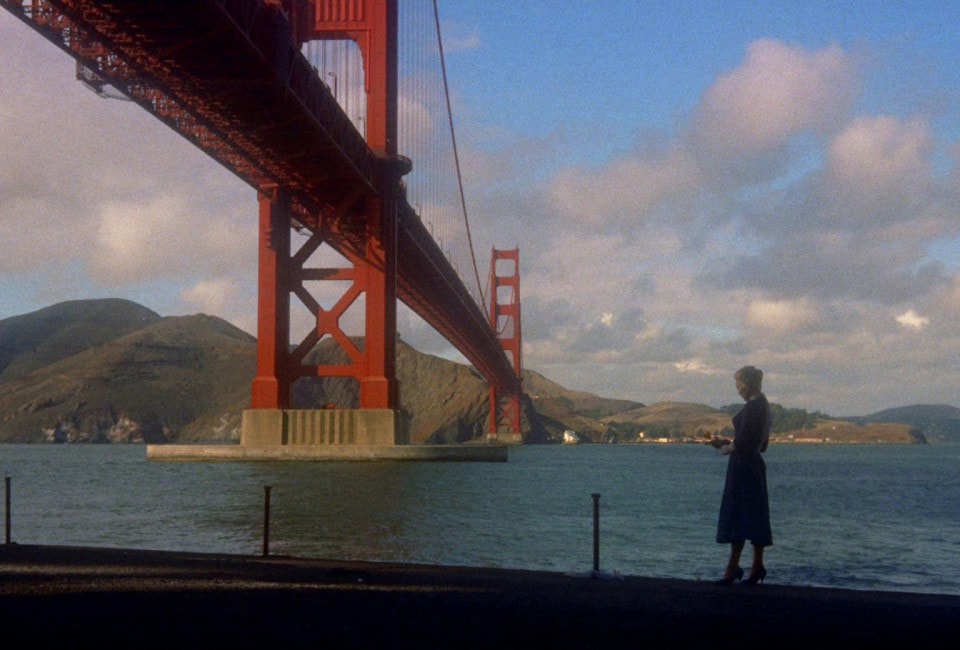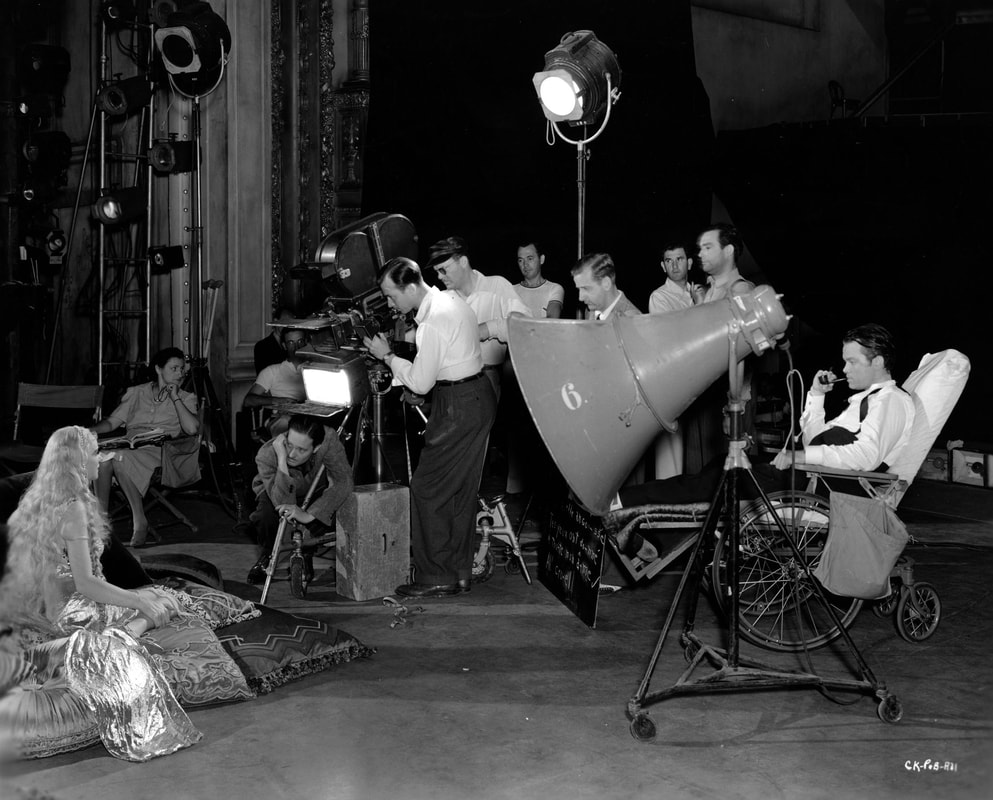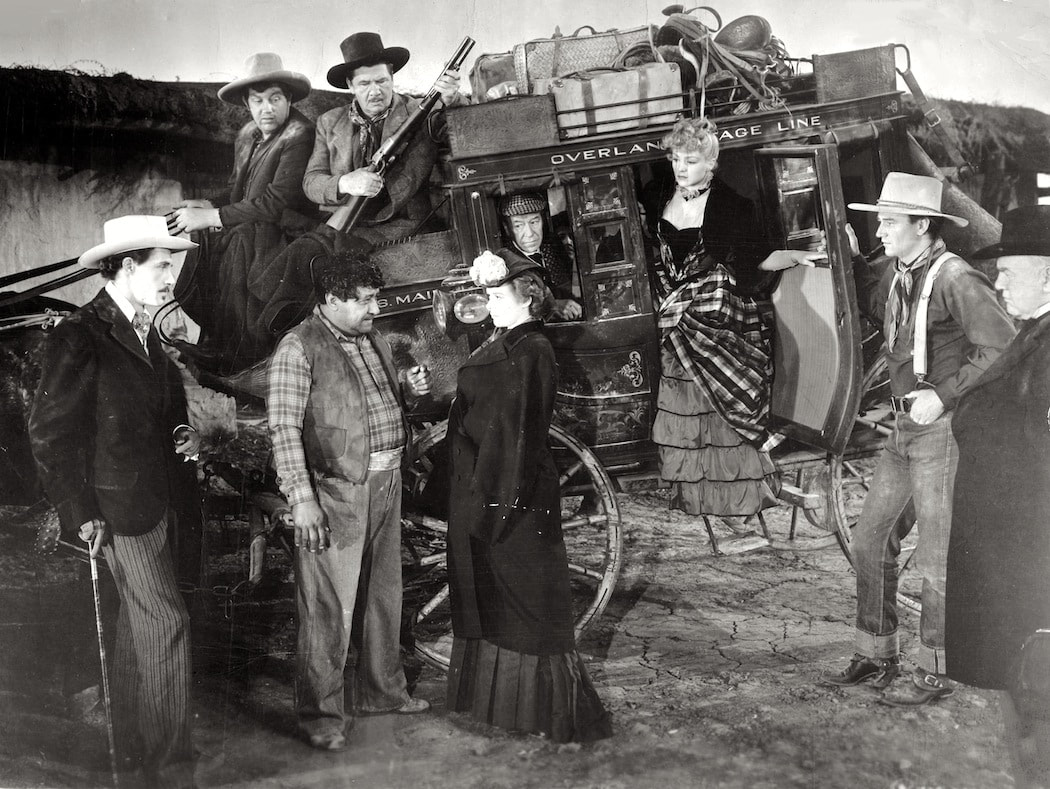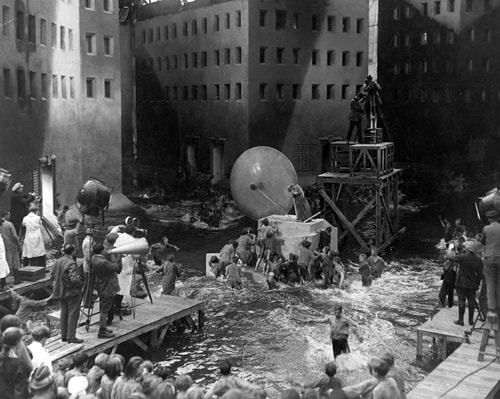Unit 8: Taking the Next Steps |
Essential Questions:
Where to go now with the creativity you've honed and the skills you've gained? What would be your dream movie to make? Pitch Package Project Presentations - Dec. 16-19 "My Favorite Film" Festival - Dec. 20 |
Unit 7: Widescreen
|
Essential Questions:
How do the technical and cultural changes of the 1960-70s change the concept of what makes film important? Key Terms: -Academy Ratio -Standard Screen Format -Widescreen -Letterbox -Pan and Scan -CinemaScope -Aspect Ratios of 1:1.33, 1:1.85, & 1:2.35 -Rule of Thirds -Foreground -Middle Ground -Background -High Concept -Low Concept Learning Activities: Warm-Ups See how directors use color and aspect ratio to affect their audiences. Creative Journal
Job description, training, & opportunities for:
"Ratio Rationale" Choose to shoot a 30 second music video in one of three aspect ratios. Edit to best utilize the mise-en-scène. Create a commentary reel where you discuss the process of creating your music video. *Follow in class directions for pre-production & production requirements. Edit according to project checklist and had-in for grading. Blog Reflection Write a response to this unit’s essential question(s). Use moments of success and challenge from the learning activities to exemplify your understanding. |
Unit 6:
|
Essential Question:
What spurned the growth of various genres in mid-20th Century and how do they influence filmmakers today? Key Terms: -Genre -Film Noir -On location shooting -Neorealism -Nonprofessional actors -Real space & real time -“The Master of Suspense” -Colorization -Reverse angle -Offscreen space -Cinematic voyeurism Learning Activities: Warm Ups Experience the various genres of mid-20th Century cinema. Learn the technical basics of chroma key. Creative Journal
Job description, training, & opportunities for:
"Genre Crossover" Choose a familiar story to remodel and retell the in a collage of genres. Develop a film that capitalizes on various genres' most distinctive features, while maintaining a through-line of a consistent story. *Follow in class directions for pre-production & production requirements. Edit according to project checklist and had-in for grading. Blog Reflection Write a response to this unit’s essential question(s). Use moments of success and challenge from the learning activities to exemplify your understanding. |
Unit 5: Breaking Rules & Inventing New Ones |
Essential Question:
How did Orson Welles break rules and invent new ones to hail as one of the Golden Age of Hollywood's most impressive directors? Key Terms: -Golden Age of Hollywood -High contrast lighting -Deep focus -Soft focus -Overlapping dialogue -Frame within frame -Flashback cuts through time -Key Light -Fill Light -Back Light -Background Light Learning Activities: Warm-Ups Discover the art of storyboarding and dive into the fundamentals of using light on film. Creative Journal Draw a storyboard depicting a scene from a film. Assemble a visual glossary of lighting terms. Career Catalog Job description, training, & opportunities for:
"Flash Forward" Use the studio to film a story of many years in the span of only a few moments. Use montage between scenes to propel the story forward. *Follow in class directions for pre-production & production requirements. Edit according to project checklist and had-in for grading. Blog Reflection Write a response to this unit’s essential question(s). Use moments of success and challenge from the learning activities to exemplify your understanding. |
Unit 4: Breaking the Silence |
Essential Question:
How did filmmaking change with Hollywood's creation of the Studio System and the advent of synchronized audio recording? Key Terms: -Storyboarding -Vitaphone -The Studio System -The Hollywood Production Code -Dissolve -The Technique of Separation Learning Activities: Warm-Ups Discover the work of Sounds Engineers and Foley Artists. Study up for the Mid-Term test with a series of reviews. Creative Journal
Research job description, training, & opportunities for: Audio Engineers MID-TERM PROJECTS*
Blog Reflection Write a response to this unit’s essential question(s). Use moments of success and challenge from the learning activities to exemplify your understanding. |
Unit 3: Mastering the Shot |
Essential Question:
How do filmmakers utilize the theory of montage as a part of cinematic language? How does this compare to continuity editing's voice in the cinematic language? Key Terms: -Screenplay -Montage -Continuity Editing -The 180 Degree Line -Master Shot -Coverage -Establishing Shot -Insert Shot -Reaction Shot -Freeze Frame -Superimpose -Point-of-View Shot -Reverse Angle Shot -Slow Disclosure Shot -Fast-Motion Shot -Slow-Motion Shot Learning Activities: Warm-Ups Discover ideas on ways to spark ideas, and the steps of screenplay writing and costume design and the pre-production required to bring them to life on screen. Creative Journal
Research job description, training, & opportunities for:
"TV Show Pilot" Create a story to film, focusing on a strong master shot and the listed coverage shots. Focus on using montage to allow the spectator to create story connections. *Follow in class directions for pre-production & production requirements. Edit according to project checklist and had-in for grading. Blog Reflection Write a response to this unit’s essential question(s). Use moments of success and challenge from the learning activities to exemplify your understanding. |
Unit 2:
|
Essential Question:
Why is cinema both the most realistic and also the most artificial of the arts? Key Terms: -Wide Shot -Full Shot -¾ Shot -Medium Shot -Medium Closeup -Close-up -Extreme Closeup -Long Shot -Two-Shot -Over-the-Shoulder -High-Angle Shot -Low-Angle Shot -Oblique Shot -Handheld -Tracking Shot -Pan -Tilt -Zoom In -Zoom Out Learning Activities: Warm-Up Videos and articles on the work of graphic artists, e.g., movie poster design and title logo typography. See types of shots and camera moves and discover their deeper meanings in a tutorial video. Creative Journal Design a poster making wise use of the principles and elements of art. Begin with the brainstorming and drafting worksheet. From there, create a fully realized digital or analog poster no smaller than 8.5x11". Career Catalog In an ongoing Google Slide Presentation research job description, training, & opportunities for
"Commercial" Work in a team to capture of each of the listed shots in to advertise an object of your choosing. *Follow in class directions for pre-production & production requirements. Edit according to project checklist and had-in for grading. Blog Reflection Write a response to this unit’s essential question(s). Use moments of success and challenge from the learning activities to exemplify your understanding. |
Unit 1:
|
Essential Question:
How do filmmakers develop and convey stories within the mise-en-scène? Key Terms: -Persistence of vision -24 frames per second -Cut -Shot -Take -Set-up -Mise-en-scène -Documentary Film Learning Activities: Warm-Ups Focus on the Elements of Art by taking notes from video tutorials and practicing each. Creative Journal
In an ongoing Google Slide Presentation research and note the job description, training, & opportunities for: Film Director, Screen Actor. PROJECTS*
Blog Reflection Write a response to this unit’s essential question(s). Use moments of success and challenge from the learning activities to exemplify your understanding. |
Workers Leaving the Lumière Factory
(Louis Lumière, 1895) Arrival of Train at La Ciotat
(Louis Lumière, 1896) |


